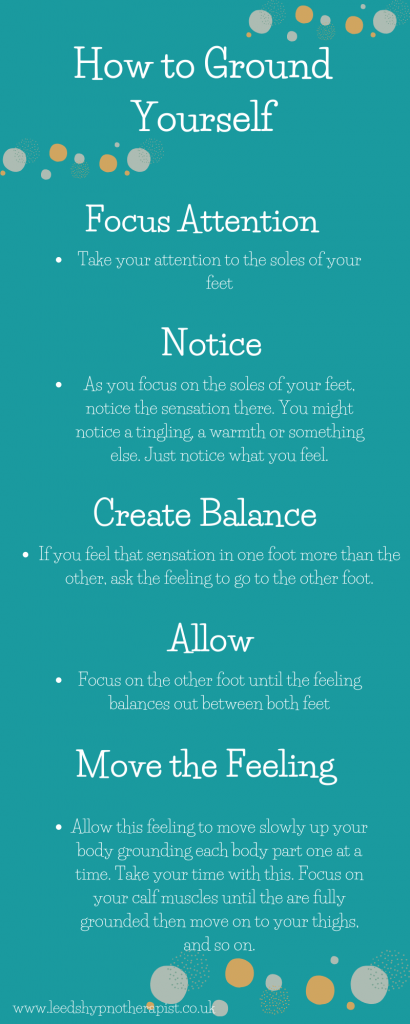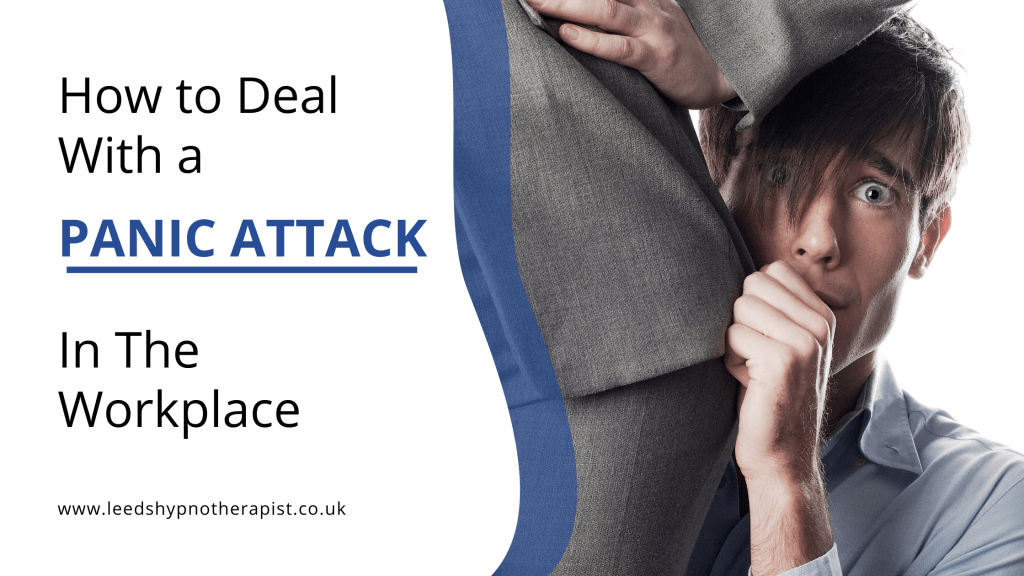Panic attacks can be extremely frightening and disabling. Panic attacks are sudden, intense feelings of fear that can last for several minutes. Panic attacks can occur for no apparent reason and can be very frightening. If you experience panic attacks, it is important to learn how to recognise them and how to stop them from happening. If you experience panic attacks at work, it can be difficult to focus on your job and perform well. In this article, we will discuss panic attacks and how to handle them effectively.
What is a panic attack and what are the physical symptoms?
A panic attack is an overload of the nervous system from an anxiety response or when fear overwhelms you. Your body becomes so flooded with adrenaline that it doesn’t know how to cope. Your breathing gets faster, your heart rate increases and you may also be experiencing symptoms of panic disorder such as sweating and shaking.
Some clients have experienced fainting (passing out) during panic attacks. While this isn’t common it could happen as a result of excess adrenaline sending your body into overdrive.
Below are the main physical symptoms of panic disorder:
– Increased heart rate
– Difficulty breathing
– Sweating
– Nausea
– Feeling of fear or dread
Even though these symptoms can feel scary at the time it is very important to ground yourself and not engage with them in order to stop making the panic attacks worse. Most panic attacks are short-lived and can be reduced in duration and also in frequency by following the steps later in this article.
How to recognise a panic attack and how to stop one from happening
If you are experiencing any of the following symptoms, you may be having a panic attack:
– racing heart
– chest pain (May have thoughts of having a heart attack)
– shortness of breath
– dizziness
– feeling faint
– tingling or numbness in your extremities
– fear that you are going crazy or dying
If you are experiencing any of these symptoms, it is important to stop what you are doing and take a few deep breaths. Try to focus on your surroundings and remind yourself that you are safe.
How to ground yourself if you are experiencing a panic attack
One of the best things that you can do for yourself if you experience a panic attack is to ground yourself. The sooner that you ground yourself, the sooner the panic attack will be over. If you experience panic attacks or have anxiety disorders it is a good practice to ground yourself using the method below 4 times a day. Practising this technique is going to automatically reduce anxiety symptoms in general and help you to reduce or even eliminate panic attacks for good.
Ground yourself by doing the following:
- Take your attention to the soles of your feet
- As you focus on the soles of your feet, notice the sensation there. You might notice a tingling, a warmth or something else. Just notice what you feel.
- If you feel that sensation in one foot more than the other, ask the feeling to go to the other foot.
- Focus on the other foot until the feeling balances out between both feet.
- Allow this feeling to move slowly up your body grounding each body part one at a time. Take your time with this. Focus on your calf muscles until the are fully grounded then move on to your thighs, and so on.
If the symptoms persist, it is important to seek a hypnotherapist who has experience with helping people suffering with panic attacks (panic disorder).
You might be looking for some other ways of dealing with panic attacks by yourself so I have listed some techniques below. The grounding technique that I have just given you is the fastest and easiest to use but often people prefer slow and complicated so I am including those for you as well.

Other methods to deal with panic attacks
If you start to experience the signs and symptoms of a panic attack, try one of these techniques:
- recognising the signs and symptoms of a panic attack: you will have an understanding about what a panic attack feels like to you. Having this awareness early gives you a greater chance of being able to stop it in it’s tracks and settle yourself down.
- deep breathing: take a deep breath in through your nose and hold it for a few seconds before exhaling slowly. Repeat this five times.
- progressive muscle relaxation: tense and relax each muscle group in your body, starting with your feet and moving up to your head.
- visualization: close your eyes and imagine yourself in a calm and relaxing place.
What to do if you experience a panic attack at work
Having a panic attack at work can be a traumatic experience. If you suffer from panic attacks and you are worried about having a panic attack while at work it is important for you to know how to recognise when a panic attack might be coming and know what you can do about it.
Panic attacks at home or in public can be stressful enough without adding in the extra dimension of having your work colleagues watching you have one.
So, as stated above, the first step is to be able to recognise what is happening with your own body. Most people that I speak to have no idea what is happening in their body from one day to the next. This means that when panic attacks happen, you aren’t aware of them until the moment that the symptoms of panic are on full blast! To prevent panic attacks, you need to be more aware of yourself.
A simple way to increase awareness
One simple way of doing this is to spend 5 to 10 minutes a day meditating and being aware of the thoughts and sensations in your body. When you do this, you are just observing what is happening without interacting with any of the thoughts or feelings. If you feel anxious feelings, just notice them. It is interacting with these feelings that lead to overwhelming anxiety. Your job is to simply observe and nothing more. If you feel yourself interacting, separate yourself from them by recognising the shape of the feeling, its density and colour. Imagine yourself floating inside of your body watching from a distance.
Practising this every day will help you to become far more aware of how your body feels which in turn will make you more aware of when panic attacks occur much earlier than you ever have been before.
Why you need to be more aware in order to manage panic attacks
Here is a little example for you to think about. It relates to how you can manage anxiety and manage symptoms of panic disorder.
When you first learn how to ride a bike without stabilisers, you tend to fall to one side or the other. You have so little awareness in your body about how to balance yourself that your body doesn’t realise that you are off centre until you are already too far over to one side.
As your body learns what it feels like to be in and out of balance you become much more aware of when you are slightly out of balance and can adjust accordingly.
This is how it is with panic disorder and anxiety disorders. As you become more aware of the subtle differences between being in and out of balance, you are more aware of a slight feeling of anxiety and you are able to subtly change it.
Back to dealing with panic attacks at work
So now that you are much more aware of your panic disorder symptoms, you will be able to stop yourself in that moment of subtle awareness and look at what it is that is going to develop panic disorder. What can you do to change how you feel about where you are?
- Do you need to change your surroundings?
- Are you unhappy in your work?
- Do you feel distrust towards someone that you work with?
- Do you have a belief that is trying to hold you back?
Now that you are aware of what is causing your body to feel anxious you are more in power and can do something about it. If you have beliefs that are holding you back, what can you do in order to change them? If you are unhappy with your work, what would you like your job to look or feel like?
Sometimes though, we can get caught out by something that can trigger panic attacks without us realising. If this happens to you then continue reading.
How to deal with unexpected panic attacks
Sudden panic attack symptoms come on all of a sudden without you having any idea why. It is important for you to quickly regain control before you develop panic disorder. The first thing that you need to do is to force yourself to breathe slowly. Breathing slowly helps to settle down your heart rate and rapid breathing increases adrenaline leading to more panic symptoms. Breathing exercises are very important to practise each and every day to train yourself in how to control your breathing.
As you become in control of your breathing, you can then start to ground yourself using the grounding exercise above. This will help to balance out your energy system and restore peace to your body quickly. Being grounded and balanced will help you to recover quickly from panic attacks.
Tips for coping with waves of panic attacks
For some people with panic disorder, they can experience wave after wave of panic attacks. This is due to your system being overwhelmed. As soon as one panic attack is coming to an end, the next panic attack is on its way.
Repeated panic attacks like these can feel overwhelming. By utilising everything that I have shown you, you will be free from these happening to you. I can’t stress to you enough how important it is for you to actually put things into practise rather than just reading it and saying that you’ll get to it someday.
- Breathe slowly and deeply to calm yourself down
- Ground yourself using the grounding exercise
- Use self-talk to reassure yourself
- Distract yourself with an activity
- Avoid any type of caffeine or stimulant
- Get plenty of restful sleep
- Eat a balanced and healthy diet
- Exercise regularly

How hypnotherapy can help with panic disorder
Hypnotherapy is a form of therapy that helps to change the way that you think and feel about certain things. It is used to help people with a range of issues such as anxiety, stress, panic attacks, and many more.
There are two main types of hypnotherapy: direct and indirect. With direct hypnotherapy, the therapist will talk to you and guide you into a hypnotic state. This type of hypnotherapy is often used for weight loss or smoking cessation. Indirect hypnotherapy is where you listen to a pre-recorded session that helps to change the way that you think and feel about certain things. This type of hypnotherapy is often used for anxiety, stress, panic attacks, and other mental health conditions.
Both types of hypnotherapy can be effective in helping to change the way that you think and feel about certain things. For people with panic disorder, hypnotherapy can be helpful in changing the thoughts and feelings that are associated with panic attacks. It can also help to increase self-confidence and self-esteem, which can be affected by panic disorder.
If you are considering hypnotherapy for panic disorder, it is important to find a therapist who has experience in working with this condition. Make sure to discuss your goals for therapy with the therapist so that they can tailor the treatment specifically for you.
In conclusion
Panic attacks can be very frightening and disabling. If you are struggling with them, please don’t hesitate to reach out for help. There are many treatments available that can help you to overcome panic disorder. Hypnotherapy is one treatment option that can be very effective in helping to change the thoughts and feelings that are associated with panic attacks.
I encourage you to contact The Leeds Hypnotherapist if you would like more information about this type of treatment or if you would like to schedule a consultation. You don’t have to suffer from panic attacks any longer – there is hope!




